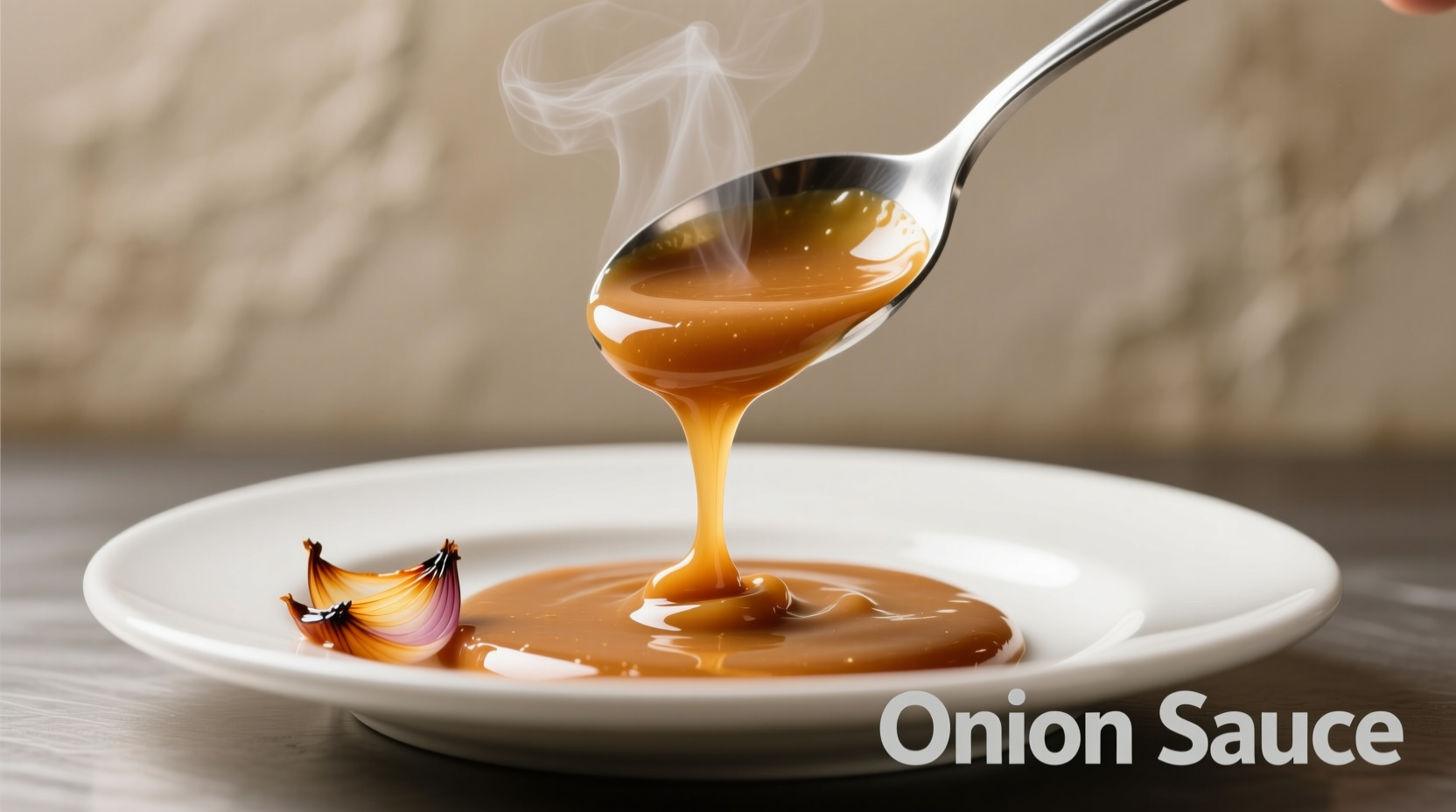Onion sauce isn't just a condiment—it's a flavor foundation that elevates proteins, vegetables, and grains with its sweet-savory complexity. Whether you're crafting a classic French sauce aux oignons, a vibrant Mexican salsa de cebolla, or an Indian pyaaz ki chutney, understanding the science behind caramelization and emulsification ensures consistent results. Professional chefs rely on three critical factors: onion variety selection (yellow onions provide balanced sweetness, red onions offer acidity, and sweet onions create milder sauces), cooking temperature control (maintaining 285-320°F for optimal Maillard reaction without burning), and acid balance (adding vinegar or citrus at precise stages to preserve texture).
The Global Evolution of Onion Sauce
Onion-based sauces have evolved across civilizations, adapting to local ingredients and cooking techniques. Ancient Roman liquamen incorporated onions with fermented fish, while medieval European cooks developed onion-thickened gravies as meat preservatives. The timeline below illustrates key developments:
| Period | Region | Key Innovation | Historical Source |
|---|---|---|---|
| 1st Century CE | Roman Empire | Onion-infused garum (fermented fish sauce) | British Museum Archives |
| 12th Century | Persia | Slow-cooked onion murabbā preserves | Metropolitan Museum of Art |
| 16th Century | Mexico | Raw onion salsa with native chilies and tomatillos | Library of Congress Mesoamerican Records |
| 19th Century | France | Modern demi-glace onion reductions | French National Library |
Essential Onion Sauce Variations Compared
Understanding regional differences prevents culinary missteps. This comparison helps select the right sauce for your dish:
| Type | Texture | Key Ingredients | Best Pairings | Prep Time |
|---|---|---|---|---|
| French Onion | Smooth, glossy | Yellow onions, beef stock, thyme | Steak, roasted meats | 45-60 minutes |
| Mexican Salsa | Chunky, fresh | White onions, cilantro, lime | Tacos, grilled fish | 15 minutes |
| Indian Chutney | Thick, textured | Red onions, tamarind, mustard oil | Curries, flatbreads | 25 minutes |
| American Gravy | Thick, opaque | Onion powder, flour, pan drippings | Roast beef, mashed potatoes | 20 minutes |
Professional-Grade Basic Onion Sauce Recipe
This foundational technique works for most applications. Yield: 2 cups
Ingredients
- 3 large yellow onions (about 1.5 lbs), thinly sliced
- 3 tbsp unsalted butter
- 1 tbsp olive oil
- 1 tsp sugar
- 1 cup beef or vegetable stock
- 2 tbsp sherry vinegar
- Salt to taste
Step-by-Step Method
- Prep onions: Slice vertically through root end to maintain structure during cooking
- Initial sweat: Cook onions in butter/oil over medium heat 10 minutes until translucent
- Caramelization: Reduce heat to medium-low, add sugar, cook 25-30 minutes stirring every 5 minutes
- De-glaze: Add vinegar to lift browned bits, simmer 2 minutes
- Emulsify: Gradually incorporate stock while whisking, simmer 8 minutes until thickened

Advanced Variations for Specific Cuisines
Master these authentic adaptations while respecting cultural context boundaries:
French Bordelaise Style
Add 1 minced shallot and 2 crushed black peppercorns during sweating stage. Finish with 2 tbsp red wine reduction and 1 tbsp chopped parsley. Context boundary: Never substitute white wine—Bordeaux red provides essential tannins that balance richness.
Mexican Salsa Roja de Cebolla
Char 2 white onions and 2 serrano peppers over open flame. Blend with 1/2 cup tomato, 1/4 cup cilantro, juice of 1 lime, and salt. Rest 30 minutes before serving. Food safety note: USDA recommends consuming raw onion salsas within 2 hours at room temperature (FSIS Food Safety Guidelines).
Indian Onion-Tamarind Chutney
Sauté 2 red onions in 2 tbsp mustard oil until golden. Add 1/4 cup tamarind paste, 1 tsp cumin, 1/2 tsp red chili powder, and 1/2 cup water. Simmer 15 minutes until thickened. Cool completely before serving with samosas or kebabs.
Critical Pairing Principles
Onion sauce success depends on matching intensity levels:
- Delicate proteins (fish, chicken): Use raw or lightly cooked onion sauces with citrus accents
- Rich meats (beef, lamb): Pair with deeply caramelized, stock-based sauces
- Vegetarian dishes: Balance with acidic onion sauces to cut through starchiness
- Avoid: Serving strongly caramelized sauces with subtle seafood—opt for quick-pickled onions instead
Storage and Shelf Life Guidelines
Proper storage maintains flavor integrity:
- Refrigerated: Store in airtight container for up to 5 days (USDA recommends 3-4 days for cooked vegetables)
- Freezing: Portion into ice cube trays, freeze solid, then transfer to freezer bags (keeps 3 months)
- Reheating: Warm gently over low heat with 1 tsp water to prevent separation
- Never refreeze thawed sauce—texture degrades significantly
Troubleshooting Common Issues
Solve these frequent problems:
- Bitter taste: Caused by burnt sugars—start over with lower heat next time
- Watery consistency: Simmer uncovered 5-7 minutes to reduce excess liquid
- Dull flavor: Brighten with 1/2 tsp lemon juice or vinegar
- Separation: Whisk vigorously while adding 1 tbsp cold butter











 浙公网安备
33010002000092号
浙公网安备
33010002000092号 浙B2-20120091-4
浙B2-20120091-4